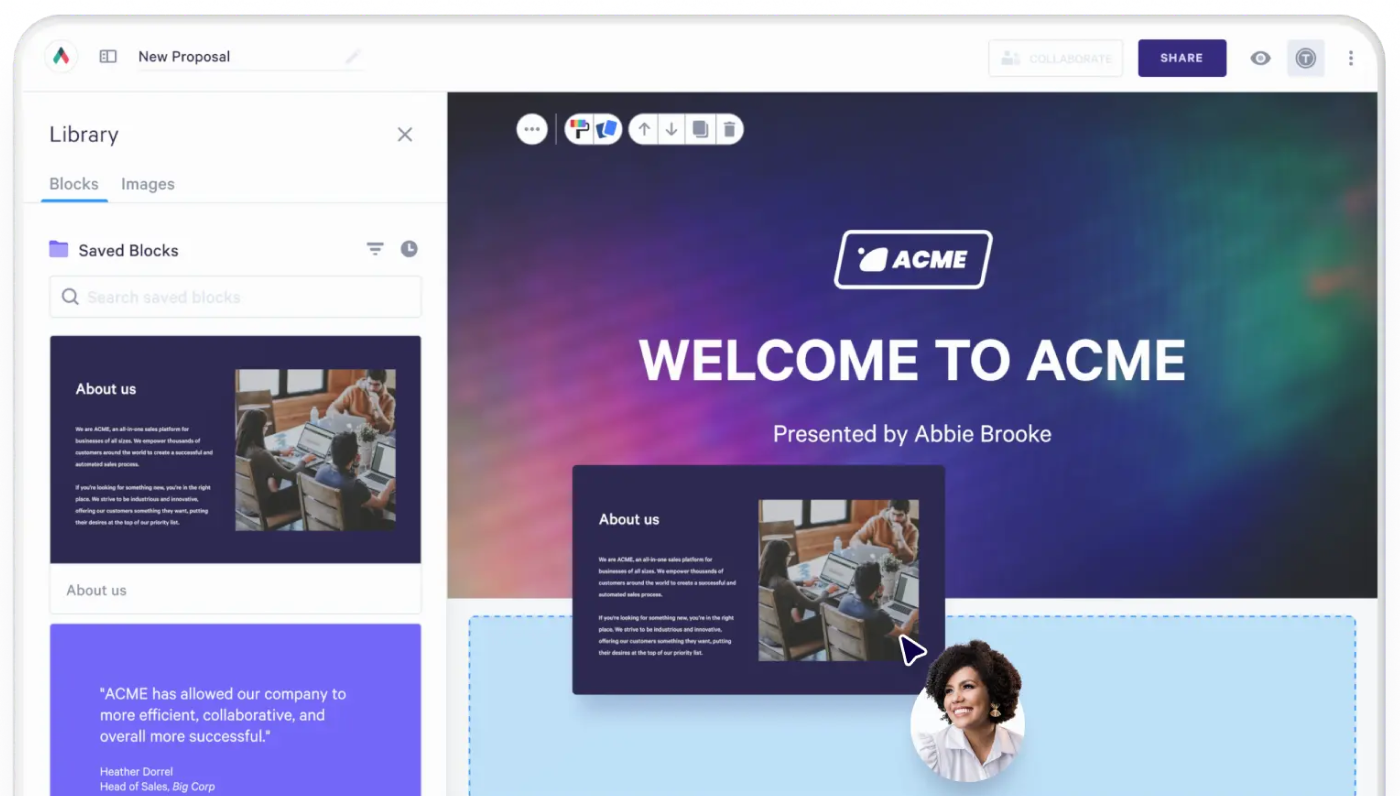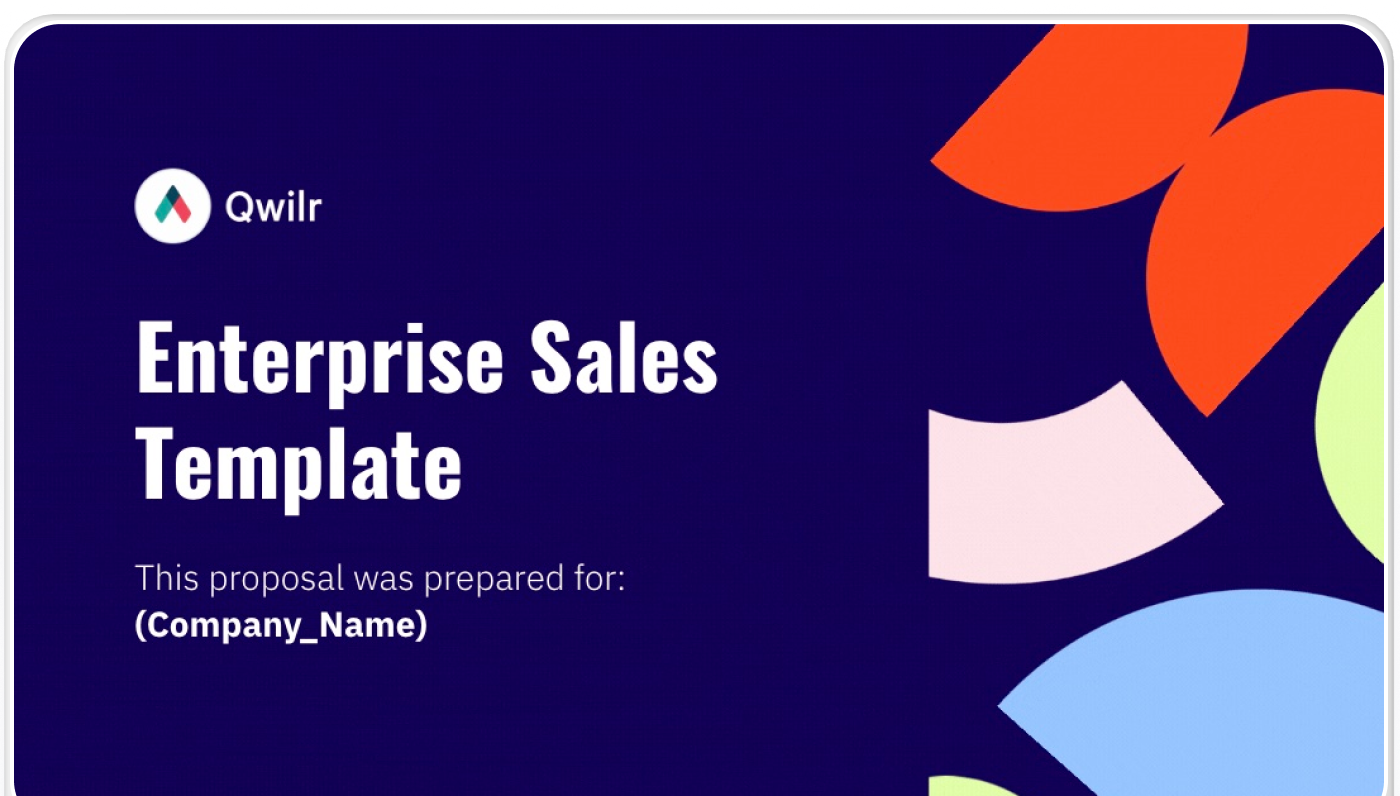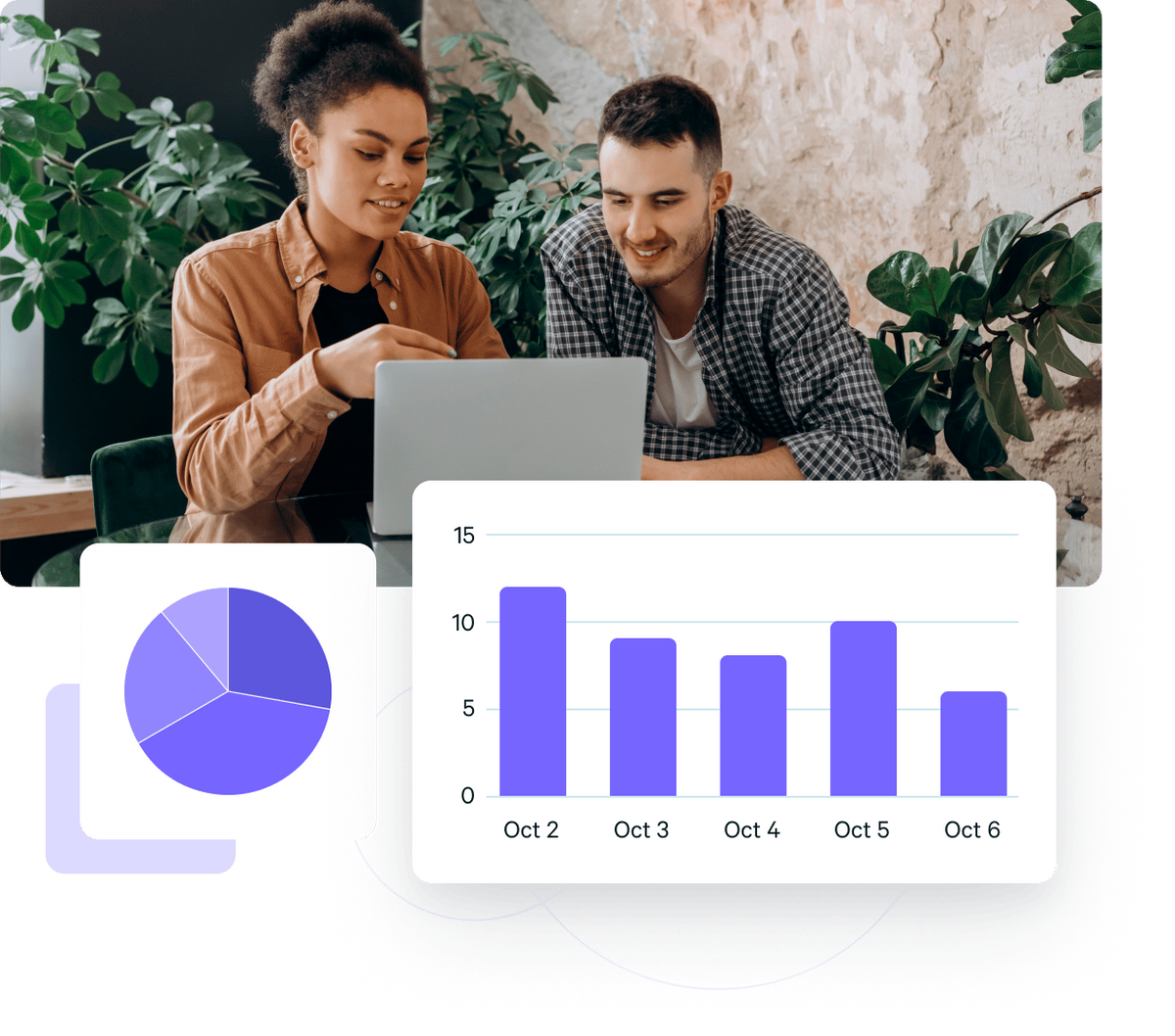
Sales productivity suffers when not enough time is spent selling. Sadly, only 23% of a rep’s time is spent with prospects and too much time is spent on unproductive work. To free up more time, look for repeated tasks that can be automated, and review your sales processes to ensure they are current with technology, and keeping pace with strategy shifts.
In an ideal world, the average sales rep would spend all their time prospecting, in discovery, and closing deals.
In reality, only 23% of a rep’s time is spent with prospects.
The other 77%? Lower value tasks — like expense reports, travel planning, scheduling, and more.
In other words, if you feel your team could be more productive, you’re not the only one with the same problem.
Truth be told, it’s obvious when a sales team misses quota. It’s not so apparent why it happens.
Obviously, you want your team to spend their time on sales activities and closing deals, not everything else that’s eating into their work days. Therefore, you must first understand the key contributors to this ‘time sink’ — and devise a strategy that reflects your team’s situation.
Let’s get to the root of this.
Sales productivity vs sales efficiency vs sales effectiveness vs sales velocity
If sales pros had a penny for every time sales terms got mixed up, they’d... have a lot of pennies. Enough to buy all the sales productivity tools in the world and all the coffee they need until retirement.
Sales productivity, sales efficiency, sales effectiveness, and sales velocity are four terms that get frequently interchanged – but actually mean different things. Understanding each of these measures is the beginning of your journey to getting your team's time back.
In short:
- Sales efficiency refers to how well a sales team uses its resources (time, money, team) to generate revenue.
- Sales effectiveness is about how well those efforts perform in terms of closed deals.
- Sales productivity is how much a sales team can ‘produce’ within a fixed timeframe – for example, number of meetings booked each week.
- Sales velocity is a measure of how quickly deals are progressed through your sales process.
How do you measure sales productivity?
To measure your team's sales productivity, you can use this formula:
Sales productivity = Total team revenue for a given timeframe / Number of reps on your team in the same timeframe.
For example, if you have a team of 10 sales reps who close deals worth $100,000 in one month, your sales productivity for that year is $100,000 divided by 10 ($10,000.)
Going further, if each member in your team works 40 hours/ week, but spends only 14 of that on selling activities, that means your sales efficiency is $10,000 divided by 14. Or, in other words, for every hour your team spends on actual selling, they generate $714.
Now, imagine if you could help your sales reps spend more time on what you actually hired them to do. Nobody's 100% efficient all of the time, but let's say you could boost their productivity by 50%. That means they'd spend 21 hours selling every week. Which, assuming all other factors remain equal, means they could generate nearly $15,000/week/sales rep (instead of just $10,000.)
The fact remains: if your salespeople spend less time on miscellaneous tasks and more time on valuable sales activities, you can expect to see an increase in revenue contribution from your team.
Why is sales productivity so important?
Beyond the obvious reasons, sales productivity is also important because it actually makes your sales reps more engaged and fulfilled with their work.
Think of it this way. If you accepted a new role with a forward-thinking company and were passionate about getting their solution into the hands of more buyers, wouldn't you be at least disappointed (if not wholly disillusioned) if you spent three-quarters of your work time doing anything but what you were hired to do?
A disappointed sales rep or manager is also not just an employee unlikely to hit their KPIs. They’re the face of your company, and signs of disengagement are often evident to your prospects and customers, as well as cross-functional teams and partners.
On the other hand, a happy and high-performing sales rep can provide ‘10x’ the contribution of an average rep . They’ll show up in more ways, beyond just closing the deal, they’ll inspire their teammates, help streamline sales processes, and relay the voice of the customer to cross functional teams like product & marketing. One way to elevate their performance is to reduce time wasters and focus their efforts on tasks that directly contribute to closing deals.
Moreover, sales productivity plays a crucial role in ensuring that both the Finance and Marketing teams can achieve their objectives, ultimately boosting confidence in the sales organization and propelling the company forward.
A productive sales team enables the Finance department to report healthy financial performance, while the Marketing team can realize the value of their investments. This synergy leads to increased employee satisfaction, as reported by HR, and allows you to showcase a highly efficient and exemplary team that’s the ‘engine room’ for your entire business.
Build a productivity-driven sales strategy
Acknowledging there’s a problem isn’t enough — you need to take action. And it all starts with some internal discovery to see what’s really going on.
Here are some of the first things you can do as a sales leader or manager to boost productivity among your reps.
1. Audit your team’s workload
To identify where your sales team’s time is spent, it may be helpful to conduct a quick audit to identify and validate your concerns about low-value, unfulfilling admin tasks.
Some companies may do this with time-tracking software, but reps will generally find this intrusive and untrusting, further hurting the confidence of your team. Instead, ask team members to track where they think their time is going on an average week and share the breakdown. Here are a few things that you might ask that they be sure to include:
- Phone calls, meetings with potential buyers
- Admin tasks, like email and calendar management
- Internal meetings
- Buyer call preparation
- Creating proposals and sales collateral
- Manual data entry or cleanup
- Scheduling
- Other (and have them fill in the blank…it might be revealing!)
The answers to these questions will give you a starting point for the rest of your discovery. Once you have information about how much time your team spends on extraneous activities vs. selling, you can back into the numbers.
For instance, if they work 50.8 hours a week and spend 23% of their time on productive sales activities, they spend about 12 hours selling per week. (Reality check: that’s 2.4 hours per day!) If you divide the amount of revenue the rep has brought in and divide it by 12: that’s the value of each selling hour per rep.
Knowing how much time your salespeople spend on non-sales tasks can help you understand how important it is to prioritize selling time – and build a strong case back to leadership about where to further invest. Additionally, you now have a baseline average and can monitor it as you change your sales team strategy.
The takeaway: To improve sales productivity, you first need to form a picture on what exactly are the non-productive and administrative tasks reps spending time on.
Pro tip: TravelBank’s sales team reduced time spent on sales proposals by 30% with Qwilr's proposal creation tool.
2. Look for tasks that can be automated
Now that you have a better idea of what activities reps are losing a good amount of their time on, you can start to think about what can realistically be automated – this is what the most successful sales teams do on a routine basis to drive performance improvements over time. To identify specific tasks from your activity breakdown that could be automated, look for the processes that are most commonly repeated. For instance, if a sales rep does the same type of data entry several times a day for each different prospect, it has a high potential for automation. Conversely, one-off or individualized tasks are bad candidates for automation but are helpful to know as you prioritize your sales rep’s time.
There are a lot of sales technology and automation tools you can use to improve your team’s productivity:
- Meeting scheduling: Calendly or MixMax
- Prospecting: Apollo
- Cold outreach: Lavender
- Lead enrichment: Clearbit
- Automated email follow-up: SalesHandy
- CRM automation: HubSpot or Salesforce
- Automated sales proposal creation: Qwilr
Every process you identify for automation frees up your team for more selling and prospecting time.
Additionally, you may uncover tasks that should be moved from under the sales umbrella altogether. For example, a Forrester client conducted an audit on their team and uncovered the need to hire customer service representatives to answer questions that were eating up the sales team’s time. Once the change was implemented, the team went from achieving 25% of quota to 85%.
The takeaway: small, meaningful changes to a sales team’s responsibilities can have a significant impact on your sales productivity.
Pro tip: integrate Qwilr with your CRM to automate sales proposal creation and save valuable selling time.
3. Set the right KPIs
Following the right sales metrics is just as important as reducing the time spent on non-selling activities. To ensure your team is staying focused and hitting sales goals, you need to set KPIs that are relevant for their success, such as:
- Quota attainment
- Sales velocity
- Win rates
- Average deal size
- Sales pipeline coverage
- Sales funnel conversion
Furthermore, you should also set KPIs at the sales manager level to make sure they’re driving the right outcomes with the reps they’re coaching:
- Coaching effectiveness (measured by rep performance improvement)
- Team quota attainment
- Sales forecast accuracy
- Rep turnover rate
- Time to ramp-up for new hires
- Deal review frequency and effectiveness
- Percentage of reps meeting or exceeding targets
Of course, different teams will have more company specific KPIs -- but overall, those listed here should provide you with some guidelines on where to start.
The takeaway: you can’t measure success if you don’t have the right metrics. Make sure you pick them wisely and it will benefit everyone: individuals, team, and company alike.
4. Define your ICP and prioritize SQLs
Lead generation is one thing. Quality lead generation — that’s an entirely different affair.
Quality leads have a higher conversion and retention rate. They flow almost naturally through the sales funnel because they fit the Ideal Customer Profile (ICP). Bad leads, on the other hand, are a waste of time and a dent in your sales pipeline.
This is why it’s essential to define your ICP and what constitutes a marketing/sales qualified lead at your company. Your lead scoring process will help you sift through marketing-qualified leads and only focus on those that are likely to convert.
Keep in mind that neither ICPs, nor SQL definitions are static. As the company grows, you may have to revisit these definitions. That’s okay: you won’t always target the exact same type of businesses or individuals as you scale — be adaptable and open-minded.
The takeaway: if you want your team to spend their time effectively, make sure you set them up for success with clearly-defined ICPs and MQL/SQL criteria.
5. Continue to iterate
Even if you find a sales strategy that works exceptionally well for your team, nothing should remain the same forever. Continue to measure improvements, survey your team regularly, and review your processes to ensure that none are stagnating.
While it can be tempting to fall into an “if it’s not broken, don’t fix it” mentality, staying curious about what’s working keeps your team ahead of the game. Plus, it lets your sales team know that you are committed to excellence.
Let your team know their opinion matters, too. When you regularly ask for insights and discuss blockers to reach a defined outcome, they know that the team’s success is collaborative rather than solely falling on their shoulders. Manager support is one of the best ways to boost performance. No one wants to go above and beyond for a leader that doesn’t care about them.
As a sales executive, don’t forget to continually educate yourself on what works for other companies. Encourage experimentation amongst your team members, and always remember to be curious.
The takeaway: nothing’s ever perfect — or not forever, at least. Be ready to iterate on your productivity-enhancing sales strategy, continuously and relentlessly.
Pro tip: Take a look at how TimeHub simplified their workflows and improved the visual impact of their sales materials.
5 extra tactics to help you boost your team’s productivity
Your overall sales strategy is important but specific tactics can also be extremely helpful when it comes to increasing sales performance and closing more deals –besides, the little day-to-day things make up your overall strategy and direction.
Here are some tactics you could consider:
Invest in proper onboarding
When reps are properly onboarded, they ramp more quickly. As a sales leader, it’s important to ensure your team has the right training, tools, and resources they need to perform at their very best right from the get-go.
Invest in sales training
Onboarding salespeople correctly is great -- but remember that your existing team needs training too. Investing in sales training for existing reps can help boost morale and avoid plateaus in performance.
Make it easy to access sales content
Don't make your sales reps fumble through folders whenever they want to send or present sales collateral to a potential client. Make sure all the sales content your reps needs is properly organized in one space.
Align sales and marketing
This is harder, but with tools like HubSpot (or similar CRM options,) you can connect the bridge between what marketing does -- and how it translates into sales activities.
Use templates throughout your sales process
Sales templates can save your reps hours every week, whilst improving the quality and consistency of how you engage prospects. Instead of depending on reps to ‘copy-paste’ from various PowerPoint presentations, your sales reps can use ready-made, proven “recipes” for sales presentations that make an impact. One type of sales templates are proposal templates such as for example:
- The Enterprise sales proposal template
- The standard sales proposal template
- The Gap Selling sales template
- The MEDDIC sales template
- The BANT sales template
Supporting your team, the key to success
Your sales team wants to sell, not to mention that’s what they were hired to do. Most reps are highly competitive, goal-oriented, and want to increase their productivity too.
To improve your sales productivity, pay attention to what is consuming your team’s time, look for areas to automate, help reps to prioritize and evaluate lead quality, and, most of all, continue to iterate your processes to optimize performance.
About the author

Brendan Connaughton|Head of Growth Marketing
Brendan heads up growth marketing and demand generation at Qwilr, overseeing performance marketing, SEO, and lifecycle initiatives. Brendan has been instrumental in developing go-to-market functions for a number of high-growth startups and challenger brands.




